Abstract
In this article, new (G′/G)-expansion method is used to look for the traveling wave solutions of nonlinear evolution equations and abundant traveling wave solutions to the Zakharov-Kuznetsov–Benjamin-Bona-Mahony equation are constructed. The performance of the method is reliable, useful and gives more new general exact solutions than the existing methods.
Introduction
It is well known that nonlinear evolution equations (NLEEs) are widely used to describe complex phenomena in various fields of science, especially in physics, plasma physics, fluid physics, quantum field theory, biophysics, chemical kinematics, geochemistry, electricity, propagation of shallow water waves, high-energy physics, quantum mechanics, optical fibers, elastic media and so on. The analytical solutions of such equations are of fundamental importance. Among the possible solutions to NLEEs, certain special form solutions may depend only on a single combination of variables such as solitons. In mathematics and physics, a soliton is a self-reinforcing solitary wave, a wave packet or pulse that upholds its shape while it travels at constant speed. Due to the availability of symbolic computation software, direct methods to search exact solutions have attracted much more attention. In the past years, many powerful and direct methods have been developed to find special solutions, such as, Weierstrass elliptic function method (Kudryashov, Citation1990), Jacobi elliptic function expansion method (Chen and Wang, Citation2005; Liu et al., Citation2001), tanh-function method (Malfliet, Citation2004; Malfliet, Citation1992; Abdou, Citation2007; Wazwaz, Citation2008; Fan, Citation2000), Inverse scattering transform method (Ablowitz and Clarkson, Citation1991), Hirota method (Hirota, Citation1971), Backlund transform method (Rogers and Shadwick, Citation1982), Exp-function method (He and Wu, Citation2006; Naher et al., Citation2011, Citation2012; Mohyud-Din, Citation2009, Citation2010; Akbar and Ali, Citation2012), Truncated Painleve expansion method (Kudryashov, Citation1991), Extended tanh-method (Abdou and Soliman, Citation2006; El-Wakil and Abdou, Citation2007; Lü and Zhang, Citation2004) and the homogeneous balance method (Zhao et al., Citation2006; Zhaosheng, Citation2004; Zhao and Tang, Citation2002) are used for searching the exact solutions.
Fig. 1 Soliton solution for Eq. Equation(17)(17) .
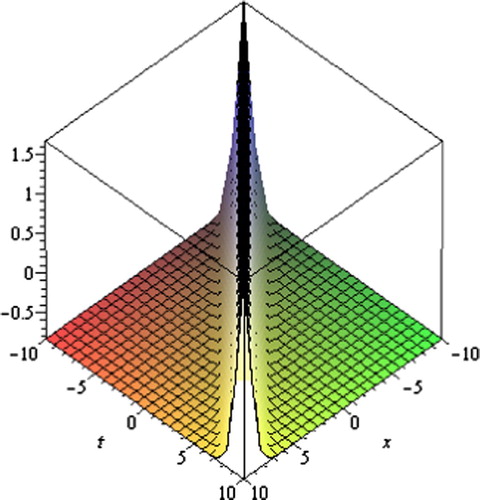
Fig. 2 Soliton solution for Eq. Equation(18)(18) .
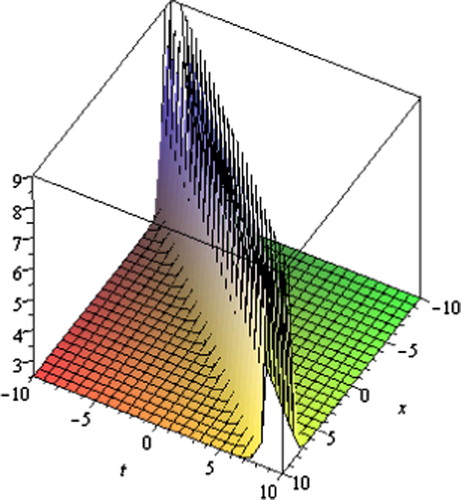
Fig. 3 Soliton solution for Eq. Equation(25)(25) .
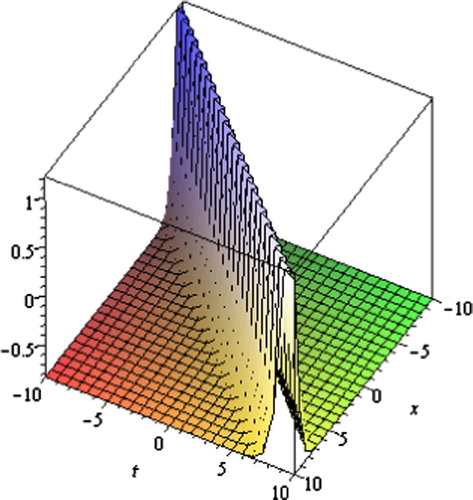
Fig. 4 Singular periodic solution for Eq. Equation(28)(28) .
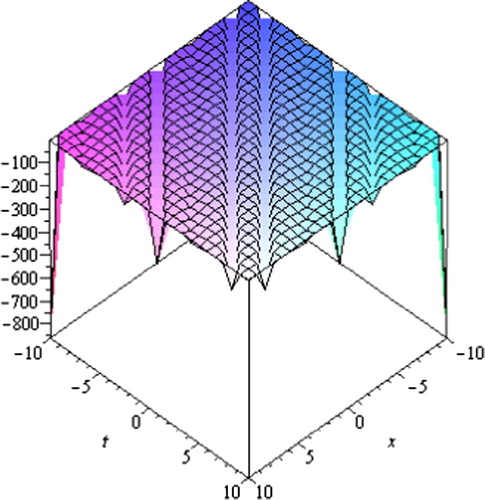
Fig. 5 Singular periodic solution for Eq. Equation(29)(29) .
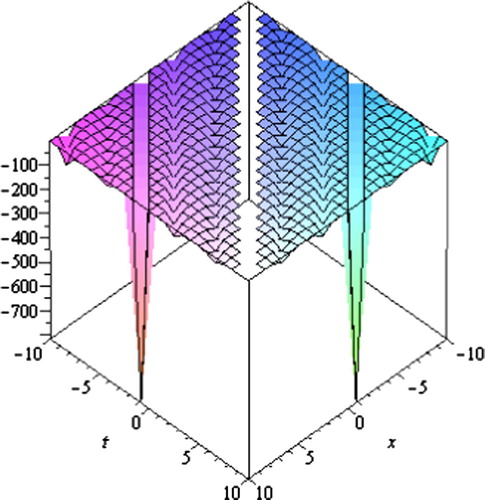
Fig. 6 Soliton solution for Eq. Equation(39)(39) .
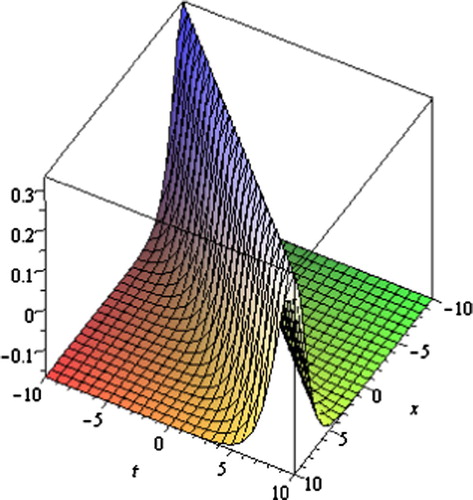
Fig. 7 Periodic solution for Eq. Equation(46)(46) .
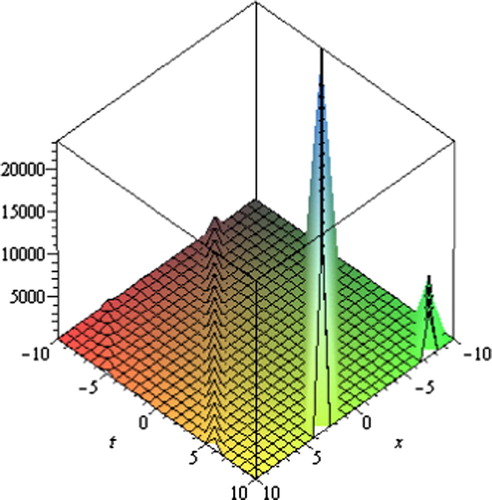
Fig. 8 Singular periodic solution for Eq. Equation(52)(52) .

Table
Lately, Wang et al. (Citation2008) introduced a direct method, called (G′/G)-expansion method and demonstrated that it is a powerful method for seeking analytic solutions of NLEEs. For additional references see the articles (Akbar et al., Citation2012a,Citationb,Citationc; El-Wakil et al., Citation2010; Parkes, Citation2010; Akbar and Ali, Citation2011; Zayed, 2009Citationa,Citationb; Zayed and Abdelaziz, 2010, 2012a,b, 2013; Zayed and Al-Joudi, 2009, 2010; Zayed and Gepreel, 2009a,b; Zayed and Gepreel, 2011). In order to establish the efficiency and tenacity of the (G′/G)-expansion method and to extend the range of applicability, further research has been carried out by several researchers. For instance, Zhang et al. (Citation2008) made a generalization of the (G′/G)-expansion method for the evolution equations with variable coefficients. Zhang et al. (Citation2010) also presented an improved (G′/G)-expansion method to seek more general traveling wave solutions. Zayed (Citation2009a,Citationb)" presented a new approach of the (G′/G)-expansion method where G(ξ) satisfies the Jacobi elliptic equation, [G′(ξ)]2 = e2 G4(ξ) + e1 G2(ξ) + e0, e2, e1, e0 are arbitrary constants, and obtained new exact solutions. Zayed (Citation2011) again presented an alternative approach of this method in which G(ξ) satisfies the Riccati equation G′(ξ) = AG(ξ) + BG2(ξ), where A and B are arbitrary constants.
In this article, we use a new (G′/G)-expansion method introduced by Alam et al. (Citation2013) to solve the NLEEs in mathematical physics and engineering. To illustrate the originality, consistency and advantages of the method, Zakharov-Kuznetsov–Benjamin-Bona-Mahony equation is solved and abundant new families of exact solutions are found.
The method
Suppose the nonlinear evolution equation is of the form(1) where P is a polynomial in u(x,t) and its partial derivatives wherein the highest order partial derivatives and the nonlinear terms are concerned. The main steps of the method are as follows:
Step 1: Combining the real variables x and t by a compound variable ξ, we suppose that
(2) where V is the speed of the traveling wave. Eq. Equation(2)
(2) transforms Eq. Equation(1)
(1) into an ordinary differential equation (ODE) for u = u(ξ):
(3) where Q is a function of u(ξ) and its derivatives in which prime stands for derivative with respect to ξ.
Step 2: Assume the solution of Eq. Equation(3)
(3) can be expressed as:
(4) where
(5)
Herein α−m or αm may be zero, but both of them can not be zero simultaneously. αi (i = 0, ±1, ±2,…, ±N) and k are constants to be determined later and G = G(ξ) satisfies the second order nonlinear ordinary differential equation:
(6) where prime denotes the derivative with respect to ξ; A, B, and C are real constants.
The Cole–Hopf transformation
reduces the Eq. Equation(6)
(6) to the Riccati equation:
(7)
Eq. Equation(7)
(7) has 25 individual solutions (see Zhu, Citation2008 for details).
Step 3: The value of the positive integer m can be determined by balancing the highest order linear terms with the nonlinear terms of the highest order shown in Eq. Equation(3)
(3) .
Step 4: Substitute Eq. Equation(4)
(4) including Eqs. Equation(5)
(5) and Equation(6)
(6) in Eq. Equation(3)
(3) , we obtain polynomials in
and
. Collect each coefficient of the resulted polynomials to zero, yields an over-determined set of algebraic equations for αi(i = 0, ±1, ±2,…, ±N), k and V.
Step 5: Suppose the value of the constants can be obtained by solving the algebraic equations obtained in Step 4. The values of the constants together with the solutions of Eq. Equation(6)
(6) yield abundant exact traveling wave solutions of the nonlinear evolution Eq. Equation(1)
(1) .
Application
In this section, we will use the new (G′/G)-expansion method to find exact traveling wave solutions of the celebrated Zakharov-Kuznetsov–Benjamin-Bona-Mahony (ZK–BBM) equation.
Let us now, consider the ZK–BBM equation(8)
Using the traveling wave variable u = u(ξ), ξ = x − Vt in Eq. Equation(8)(8) and integrating once, we obtain
(9) where C1 is an integration constant.
Considering the homogeneous balance between u″ and u2 in Eq. Equation(9)(9) , we obtain m = 2. Therefore, the trial solution becomes
(10)
Using Eq. Equation(10)(10) in Eq. Equation(9)
(9) , the left hand side transforms into polynomials in
, (i = 0, 1, 2,…,N) and
, (i = 0, 1, 2,…, N). Equating the coefficients of same power of the resulted polynomials to zero, we obtain a set of algebraic equations (which are omitted for the sake of simplicity) for α0, α1, α2, α−1, α−2, k, C1 and V. Solving the over-determined set of algebraic equations by using the symbolic computation software, such as Maple 13, we obtain
Set 1:
(11) where k, V, A, B and C are arbitrary constants.
Set.2:
(12) where k,V,A,B and C are arbitrary constants.
Set 3:
(13) where V, A, B and C are arbitrary constants.
Substituting Eqs. (11)–(13) in Eq. Equation(10)(10) , we obtain
(14)
(15)
(16) where ξ = x − Vt; V, A, B and C are arbitrary constants.
Substituting the solutions G(ξ) of the Eq. Equation(6)(6) in Eq. Equation(14)
(14) and simplifying, we obtain the following solutions:
When Δ = A2 − 4BC + 4B > 0 and A(C − 1) ≠ 0 (or B(C − 1) ≠ 0),(17)
(18)
(19)
(20)
(21)
(22)
(23) where F and H are real constants.
(24)
(25)
(26)
(27)
When Δ = A2 − 4BC + 4B < 0 and A(C − 1) ≠ 0 (or B (C − 1) ≠ 0),(28)
(29)
(30)
(31)
(32)
(33)
(34) where F and H are real constants such that F2 − H2 > 0.
(35)
(36)
(37)
(38)
When B = 0 and A(C − 1) ≠ 0,(39)
(40) where c1 is an arbitrary constant.
When A = B = 0 and (C − 1) ≠ 0, the solution of Eq. Equation(8)(8) is
(41) where c2 is an arbitrary constant.
Substituting the solutions G(ξ) of the Eq. Equation(6)(6) in Eq. Equation(15)
(15) and simplifying, we obtain the following solutions:
When Δ = A2 − 4BC + 4B > 0 and A(C − 1) ≠ 0 (orB (C − 1) ≠ 0),(42) where ξ = x − Vt; k, A, B and C are arbitrary constants.
(43)
(44)
The other families of exact solutions of Eq. Equation(8)(8) are omitted for convenience.
When Δ = A2 − 4BC + 4B < 0 and A(C − 1) ≠ 0 (or B (C − 1) ≠ 0),(45)
(46)
(47)
When A = B = 0 and(C − 1) ≠ 0, the solution of Eq. Equation(8)(8) is
(48) where c3 is an arbitrary constant.
We can write down the other families of exact solutions of Eq. Equation(8)(8) which are omitted for practicality.
Finally, substituting the solutions G(ξ) of the Eq. Equation(6)(6) in Eq. Equation(16)
(16) and simplifying, we obtain the following solutions:
When Δ = A2 − 4BC + 4B > 0 and A(C − 1) ≠ 0 (or B (C − 1) ≠ 0),(49) where ξ = x − Vt; A, B and C are arbitrary constants.
(50)
(51)
For simplicity others families of exact solutions are omitted.
When Δ = A2 − 4BC + 4B < 0 and A(C − 1) ≠ 0 (or B (C − 1) ≠ 0),(52)
(53)
(54)
When (C − 1) ≠ 0 and A = B = 0, the solution of Eq. Equation(8)(8) is
(55) where c4 is an arbitrary constant.
The other families of exact solutions of Eq. Equation(8)(8) are omitted for convenience.
Graphical presentation
Graph is a powerful tool for communication and describes logically the solutions of the problems. Therefore, some graphs of the solutions for different values of parameters are given (Figs. 1–8). The graphs readily have shown the solitary wave form of the solutions.
Remark 1
We have checked the obtained solutions by putting them back in the original equation and found correct.
Results and discussion
From the above solutions we observe that, if we put A = −λ, B = −μ, C = 0, k = 0, a = a, b = b and V = −V in our solutions , then (Zhang et al., Citation2010) solutions (14) and (15) are identical to our solutions when C1 = 0 and C2 = 0, respectively. Similarly, if we put A = λ, B = −μ, C = 0, k = 0, a = a, b = b and V = −V in our solutions
, then (Zhang et al., Citation2010) solutions (17) and (19) are identical to our solutions when C1 = 0 and C2 = 0, respectively. On the other hand (Zhang et al., Citation2010) solution (20) is identical to our solution
for different values of parameters. Zhang et al. (Citation2010) did not find any more solution, but by using the new (G′/G)-expansion method, we have obtained some new and exact solutions. It can be shown that solutions obtained by the improved (G′/G)-expansion method Zhang et al. (Citation2010) are only special cases of the new (G′/G)-expansion method.
Comparison
Comparison of old and new (G′/G)-expansion approaches.
Conclusion
New (G′/G)-expansion method is applied to the Zakharov-Kuznetsov–Benjamin-Bona-Mahony equation and abundant exact traveling wave solutions are constructed for this equation. The obtained solutions are more general, and many known solutions are only a special case of them. Further, this study shows that the method is quite efficient and practically well suited to be used in finding exact solutions of nonlinear evolution equations. It is noteworthy to observe that the basic (G′/G)-expansion method, improved (G′/G)-expansion, generalized and improved (G′/G)-expansion method are only special cases of the new (G′/G)-expansion method. Thus the new (G′/G)-expansion method would be a powerful mathematical tool for solving nonlinear evolution equations.
Notes
Peer review under responsibility of University of Bahrain.
References
- M.A.AbdouA.A.SolimanModified extended tanh-function method and its application on nonlinear physical equationsPhy. Lett. A35362006487492
- M.A.AbdouThe extended tanh-method and its applications for solving nonlinear physical modelsAppl. Math. Comput.1902007988996
- M.J.AblowitzP.A.ClarksonSolitons, Nonlinear Evolution Equations and Inverse Scattering Transform1991Cambridge University PressCambridge
- M.A.AkbarN.H.M.AliE.M.E.ZayedA generalized and improved (G′/G)- expansion method for nonlinear evolution equationsMath. Prob. Eng.2012201222 doi: http://dx.doi.org/10.1155/2012/459879
- M.A.AkbarN.H.M.AliE.M.E.ZayedAbundant exact travelling wave solutions of the generalized Bretherton equation via the improved (G′/G)-expansion methodCommun. Theor. Phys.572012173178
- M.A.AkbarN.H.M.AliThe alternative (G′/G)-expansion method and its applications to nonlinear partial differential equationsInt. J. Phys. Sci.635201179107920
- M.A.AkbarN.H.M.AliNew solitary and periodic solutions of nonlinear evolution equation by exp-function methodWorld Appl. Sci. J.1712201216031610
- M.A.AkbarN.H.M.AliS.T.Mohyud-DinThe alternative (G′/G)- expansion method with generalized Riccati equation: application to fifth order (1+1)-dimensional Caudrey–Dodd–Gibbon equationInt. J. Phys. Sci.752012743752
- M.N.AlamM.A.AkbarS.T.Mohyud-DinA novel (G′/G)-expansion method and its application to the Boussinesq equationChin. Phys. B2013 in press
- Y.ChenQ.WangExtended Jacobi elliptic function rational expansion method and abundant families of Jacobi elliptic functions solutions to (1+1)-dimensional dispersive long wave equationChaos Solitons Fractals242005745757
- S.A.El-WakilM.A.AbdouE.K.El-ShewyA.Hendi(G′/G)-expansion method equivalent to the extended tanh-function methodPhys. Script.81201003501135014
- S.A.El-WakilM.A.AbdouNew exact travelling wave solutions using modified extended tanh-function methodChaos Solitons Fractals3142007840852
- E.G.FanExtended tanh-function method and its applications to nonlinear equationsPhys. Lett. A2772000212218
- J.H.HeX.H.WuExp-function method for nonlinear wave equationsChaos Solitons Fractals3032006700708
- R.HirotaExact solution of the KdV equation for multiple collisions of solutionsPhys. Rev. Lett.27197111921194
- N.A.KudryashovOn types of nonlinear non-integrable equations with exact solutionsPhys. Lett. A1551991269275
- N.A.KudryashovExact solutions of the generalized Kuramoto–Sivashinsky equationPhys. Lett. A1471990287291
- S.LiuZ.FuS.D.LiuQ.ZhaoJacobi elliptic function expansion method and periodic wave solutions of nonlinear wave equationsPhys. Lett. A28920016974
- Z.LüH.ZhangApplications of a further extended tanh methodAppl. Math. Comput.15922004401406
- W.MalflietSolitary wave solutions of nonlinear wave equationsAm. J. Phys.6071992650654
- W.MalflietThe tanh method: a tool for solving certain classes of nonlinear evolution and wave equationsJ. Comput. Appl. Math.2004529541
- S.T.Mohyud-DinSolutions of nonlinear differential equations by exp-function methodWorld Appl. Sci. J.72009116147 Special Issue for Applied Math
- S.T.Mohyud-DinM.A.NoorA.WaheedExp-function method for generalized travelling solutions of Calogero–Degasperis–Fokas equationZ. Naturforsc. A J. Phy. Sci.65a20107884
- H.NaherF.A.AbdullahM.A.AkbarThe Exp-function method for new exact solutions of the nonlinear partial differential equationsInt. J. Phys. Sci.629201167066716
- H.NaherF.A.AbdullahM.A.AkbarNew travelling wave solutions of the higher dimensional nonlinear partial differential equation by the Exp-function methodJ. Appl. Math.201220121410.1155/2012/575387
- E.J.ParkesObservations on the basis of (G′/G)-expansion method for finding solutions to nonlinear evolution equationsAppl. Math. Comput.217201017591763
- C.RogersW.F.ShadwickBacklund Transformations1982Academic PressNew York
- M.WangX.LiJ.ZhangThe (G′/G)-expansion method and travelling wave solutions of nonlinear evolution equations in mathematical physicsPhys. Lett. A3722008417423
- A.M.WazwazThe extended tanh-method for new compact and non-compact solutions for the KP–BBM and the ZK–BBM equationsChaos Solitons Fractals38200815051516
- E.M.E.ZayedNew travelling wave solutions for higher dimensional nonlinear evolution equations using a generalized (G′/G)-expansion methodJ. Phys. A Math. Theor.422009195202195214
- E.M.E.ZayedThe (G′/G)-expansion method combined with the Riccati equation for finding exact solutions of nonlinear PDEsJ. Appl. Math. Inform.291–22011351367
- E.M.E.ZayedThe (G′/G)-expansion method and its applications to some nonlinear evolution equations in the mathematical physicsJ. Appl. Math. Comput.30200989103
- E.M.E.ZayedM.A.M.AbdelazizTraveling wave solutions for the Burgers equation and the KdV equation with variable coefficients using the generalized (G′/G)-expansion methodZ. Naturforsc. A. Germany65a12201010651070
- E.M.E.ZayedM.A.M.AbdelazizAn extended (G′/G)- expansion method and its applications to the (2+1)-dimensional nonlinear evolution equationsWSEAS Trans. Math.1111201210391047
- E.M.E.ZayedM.A.M.AbdelazizApplications of a generalized extended (G′/G)-expansion method to find exact solutions of two nonlinear Schrödinger equations with variable coefficientsActa Phys. Polon. A. Poland12132012573580
- E.M.E.ZayedM.A.M.AbdelazizExact travelling wave solutions of nonlinear variable coefficients evolution equations with forced terms using the generalized (G′/G)-expansion methodComput. Math. ModelVol. 24(1)2013Springer103113 doi:10.1007/s10598-013-9163-4
- E.M.E.ZayedS.Al-JoudiApplications of an improved (G′/G)-expansion method to nonlinear PDEs in mathematical physicsAIP Conf. Proc. Am. Instit. Phys.11682009371376
- E.M.E.ZayedS.Al-JoudiApplications of an extended (G′/G)-expansion method to find exact solutions of nonlinear PDEs in mathematical PhysicsMath. Prob. Eng.201020101910.1155/2010/768573
- E.M.E.ZayedK.A.GepreelSome applications of the (G′/G)-expansion method to nonlinear partial differential equationsAppl. Math. Comput.21212009113
- E.M.E.ZayedK.A.GepreelThe modified (G′/G)-expansion method and its applications to construct exact solutions for nonlinear PDEsWSEAS Trans. Math.1082011 270-178
- E.M.E.ZayedK.A.GepreelThe (G′/G)-expansion method for finding travelling wave solutions of nonlinear PDEs in mathematical physicsJ. Math. Phys.502009013502013513
- J.ZhangF.JiangX.ZhaoAn improved (G′/G)-expansion method for solving nonlinear evolution equationsInt. J. Comput. Math.878201017161725
- J.ZhangX.WeiY.LuA generalized (G′/G)-expansion method and its applicationsPhys. Lett. A372200836533658
- X.ZhaoD.TangA new note on a homogeneous balance methodPhy. Lett. A2971-220025967
- X.Zhaol.WangW.SunThe repeated homogeneous balance method and its applications to nonlinear partial differential equationsChaos Solitons Fractals2822006448453
- F.ZhaoshengComment on On the extended applications of homogeneous balance methodAppl. Math. Comput.15822004593596
- S.ZhuThe generalized Riccati equation mapping method in non-linear evolution equation: application to (2+1)-dimensional Boiti–Leon–Pempinelle equationChaos Soliton Fractals37200813351342
